Is it something in the air? Recently I’ve been reading discussions about the advantages and disadvantages of using sculpture in a garden. Does it add or detract? Some have argued in favour; others are vehemently opposed.
The strongest statement of opposition I’ve read came from a New Zealand gardener, newspaper columnist and blogger named Abbie Jury.
Abbie’s comment came in response to a post on Thinkingardens, the excellent and far-ranging garden blog run by Veddw’s Anne Wareham. The entry showed photos of a sculpture exhibition at England’s Painswick Rococo Garden. Some sculptures were fine, others not so much.
 |
| Although I don’t really like it, this ‘Being’ in the Ann Norton Sculpture Garden effectively set off the collection of tropical plants. |
I enjoyed reading the article, but it seems to me that it avoided the central question. Sculpture parks and temporary sculpture exhibitions present special cases and raise problems that relate to their particular circumstances. For instance, the art in a temporary exhibition may not relate well to the site. Pieces may be too big or too small, too decorative or too contemporary. Too many pieces may be crowded into the setting, and one piece may work against its neighbour.
But what about sculpture in private gardens? Does art add something there or does it get in the way? I would argue that it depends… on the art and on the garden.
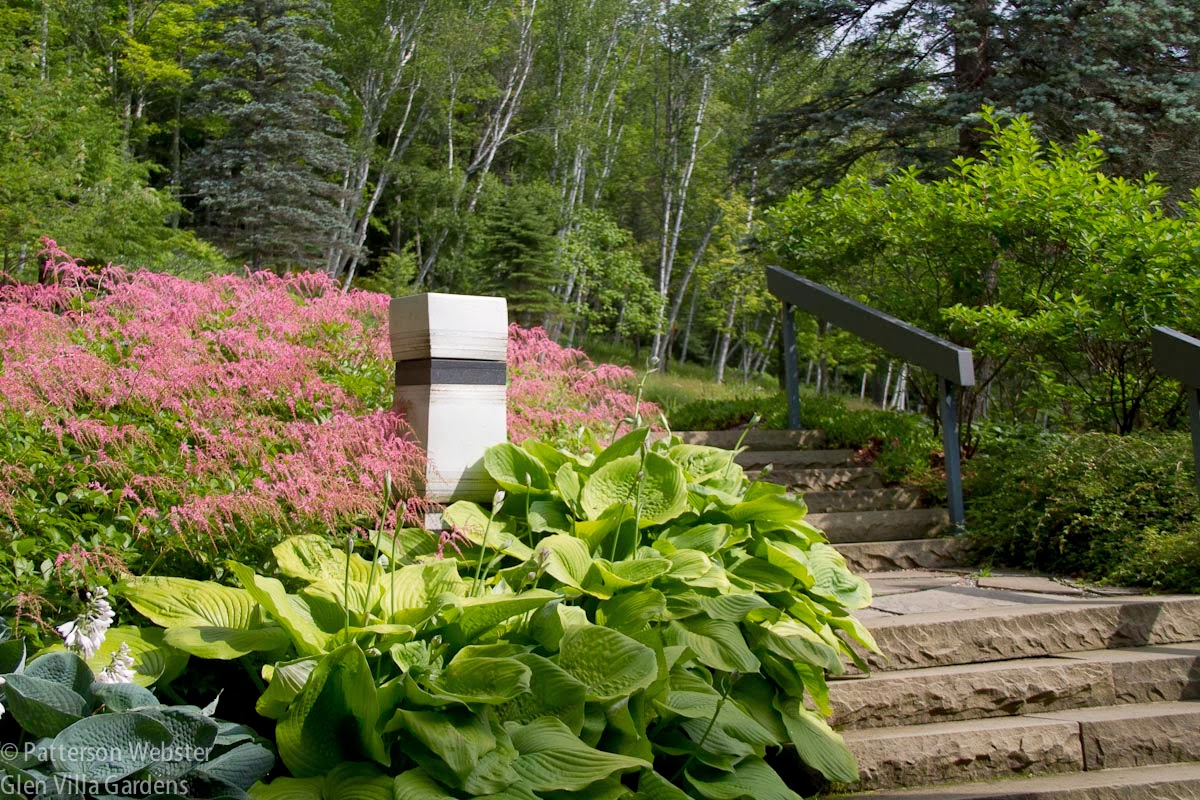 |
| Does this sculpture work in its setting? That is, does it add something to the experience of being there? |
This is not waffling. Rather it is a way of approaching the question in a more nuanced fashion. By looking at sculpture that is permanently rather than temporarily placed in a garden, we can explore the question more thoroughly and discover, perhaps, why some pieces work and others don’t.
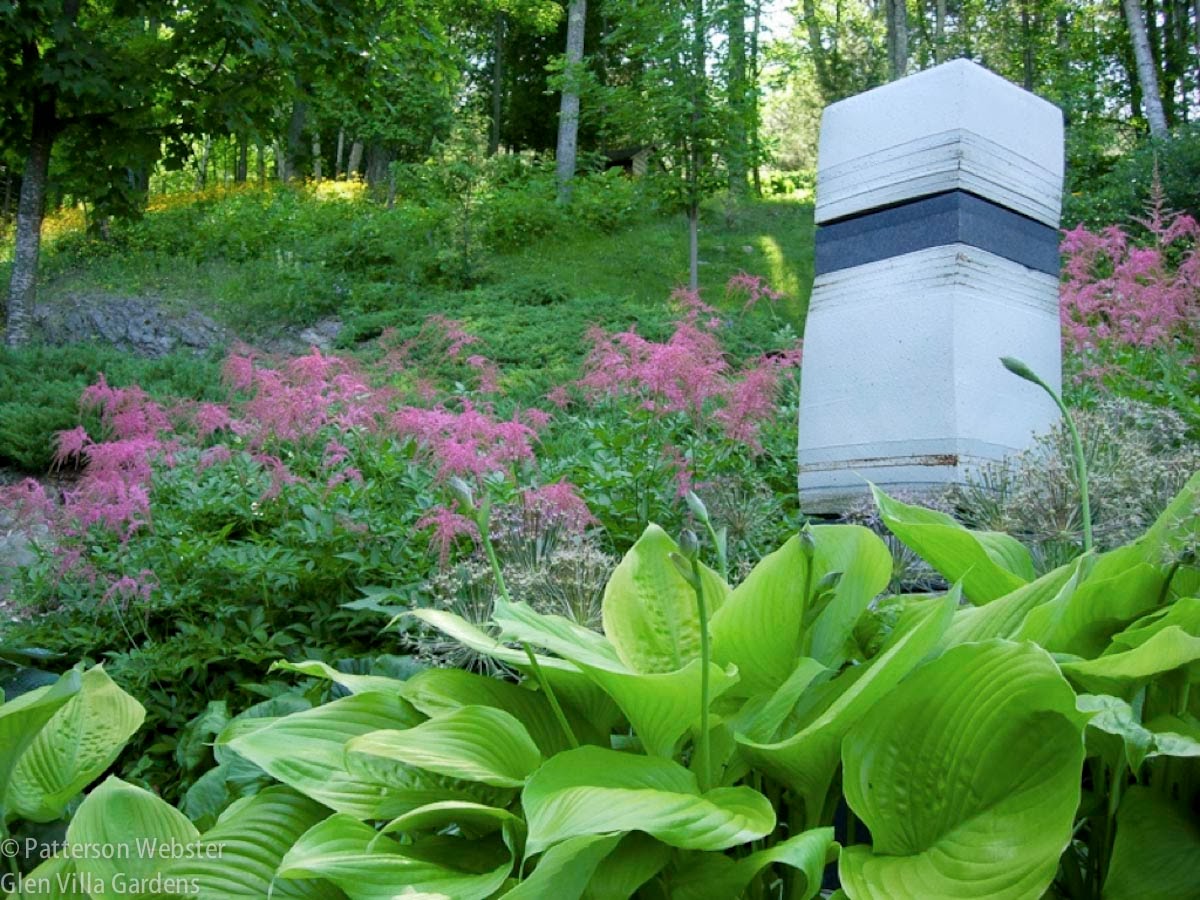 |
| Does your opinion change if you view the sculpture and surrounding plants from a different angle? |
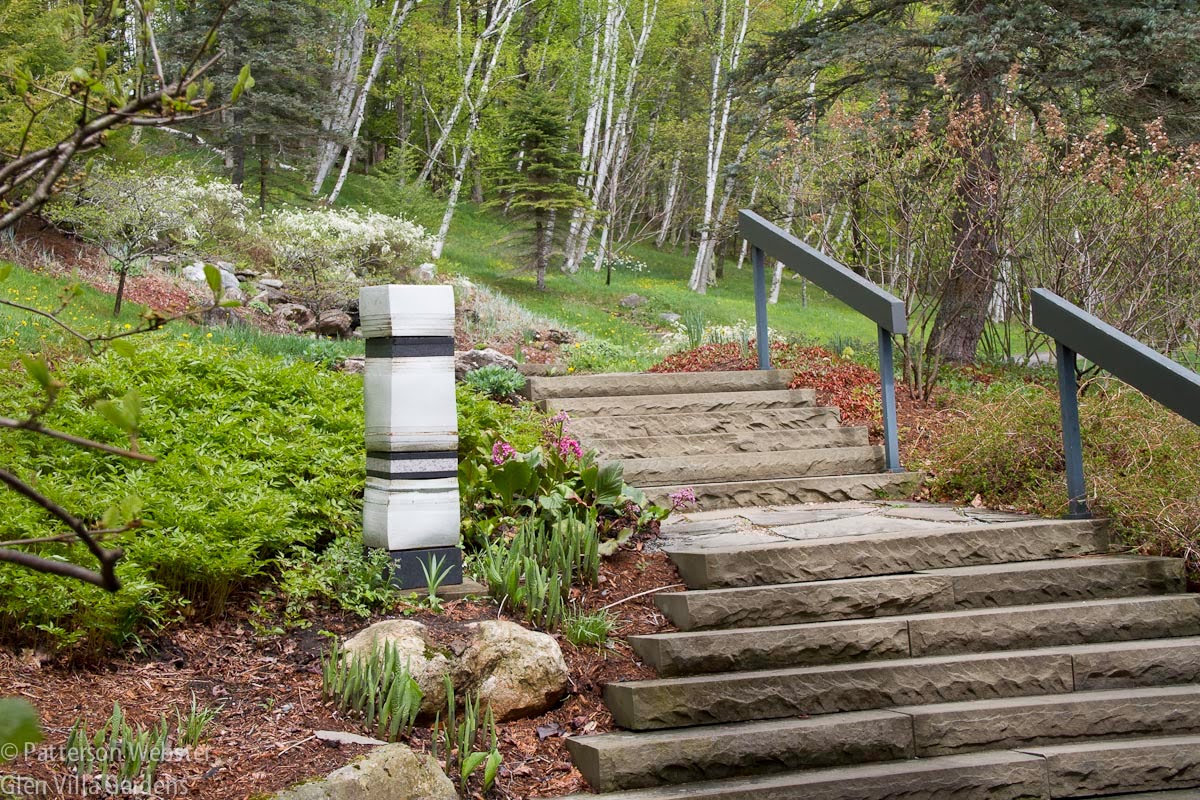 |
| What if the photo was taken in a different season? Is your opinion still the same? |
This Hercules towering above the horizon at Kykuit, the Rockefeller’s garden in New York State, may be a fine piece of sculpture, but in the context of enriching the experience of the garden, for me it is a failure. Using Abbie’s words quoted above, Hercules is shouting, and at the top of his voice. He wants to be the center of attention, and he is. He dominates not only the garden but the landscape behind him. No, more than that: he seems to dominate the entire world. Which, in my view, is not an approach that generates a peaceful or well-balanced garden experience.
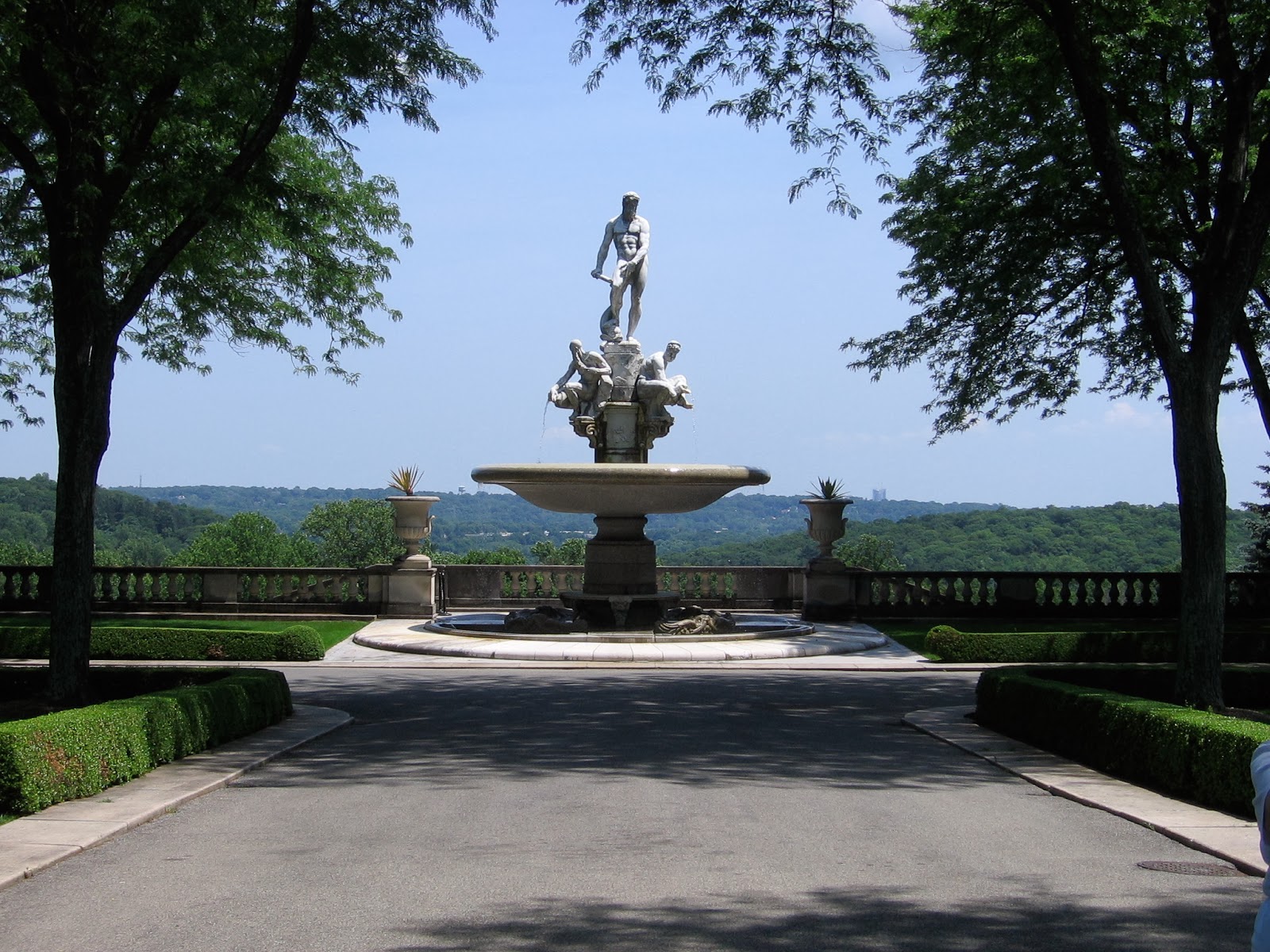 |
| A large sculpture focuses the view from the entry to the Rockefeller’s house at Kykuit. |
Hercules seems to have this effect wherever he is placed. Consider this example from Vaux-le-Vicomte, the garden designed by André Le Nôtre in the 1600s. Hercules stands on a hillside a very long way from the chateau. Even so he appears larger than life. (As he is.) He looks down on everything in the garden and all is subservient to his gaze and massive presence.
I think that is the message that the owner, Nicolas Fouquet, wanted to deliver. As did the Rockefellers. In both cases Hercules is a stand-in, symbol for the power and authority each exercised on the financial and political stage.
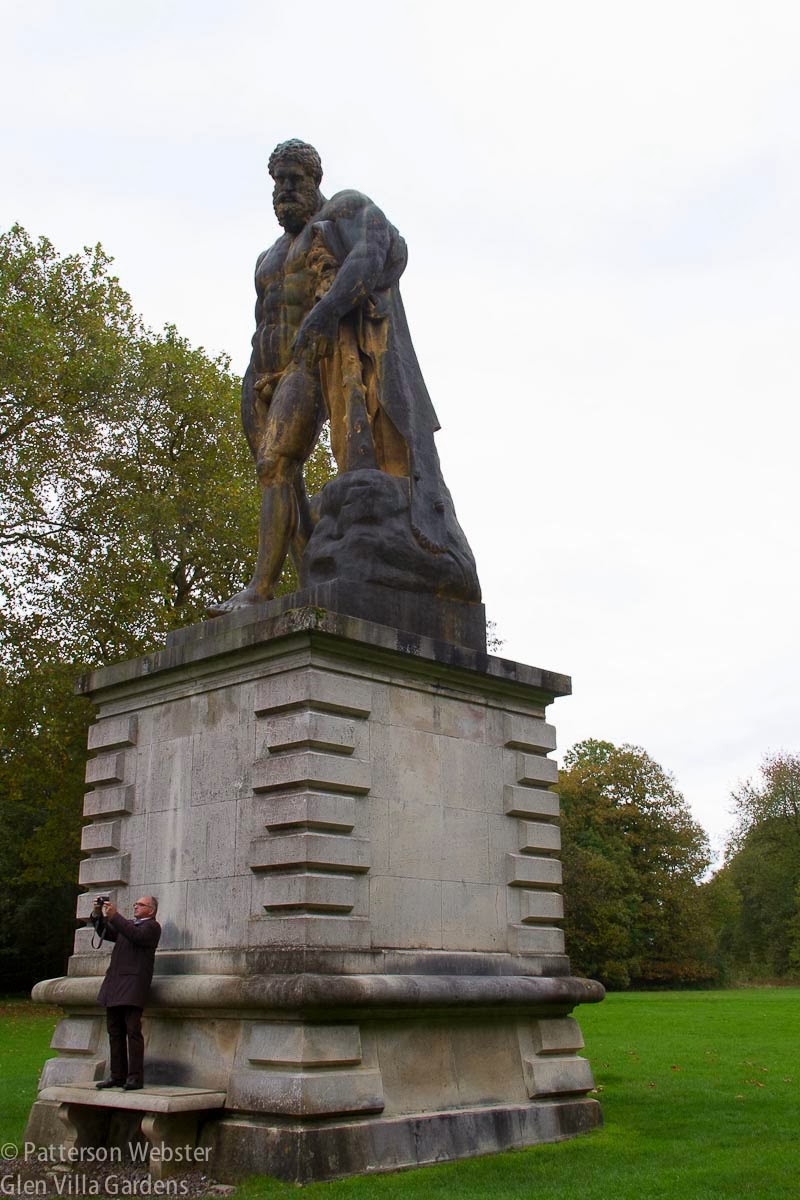 |
| A copy of the Farnese Hercules towers over a tourist at Vaux-le-Vicomte. |
For some reason, while the Rockefeller’s Hercules at Kykuit does not ‘work’ for me, the one at Vaux-le-Vicomte does. Is it because it so far from the chateau? Because it is so much larger than life? Because it is more in keeping with the overall story that the garden tells?
I think it is latter. Without question, sculpture in a garden says something about the garden and its owner. It sends a message.
Consider the little bird below. He appears in an informally structured garden that is full of exuberant plants. The plants are controlled but the overall impact of the garden is natural, as if plants have been left to do their own thing. Perched above our head, the sculpture imitates the bird’s natural behaviour, and consequently reinforces the style of the garden. It also sends a message about the gardener and her relationship to the natural world: not one of human domination over nature but of harmony with it.
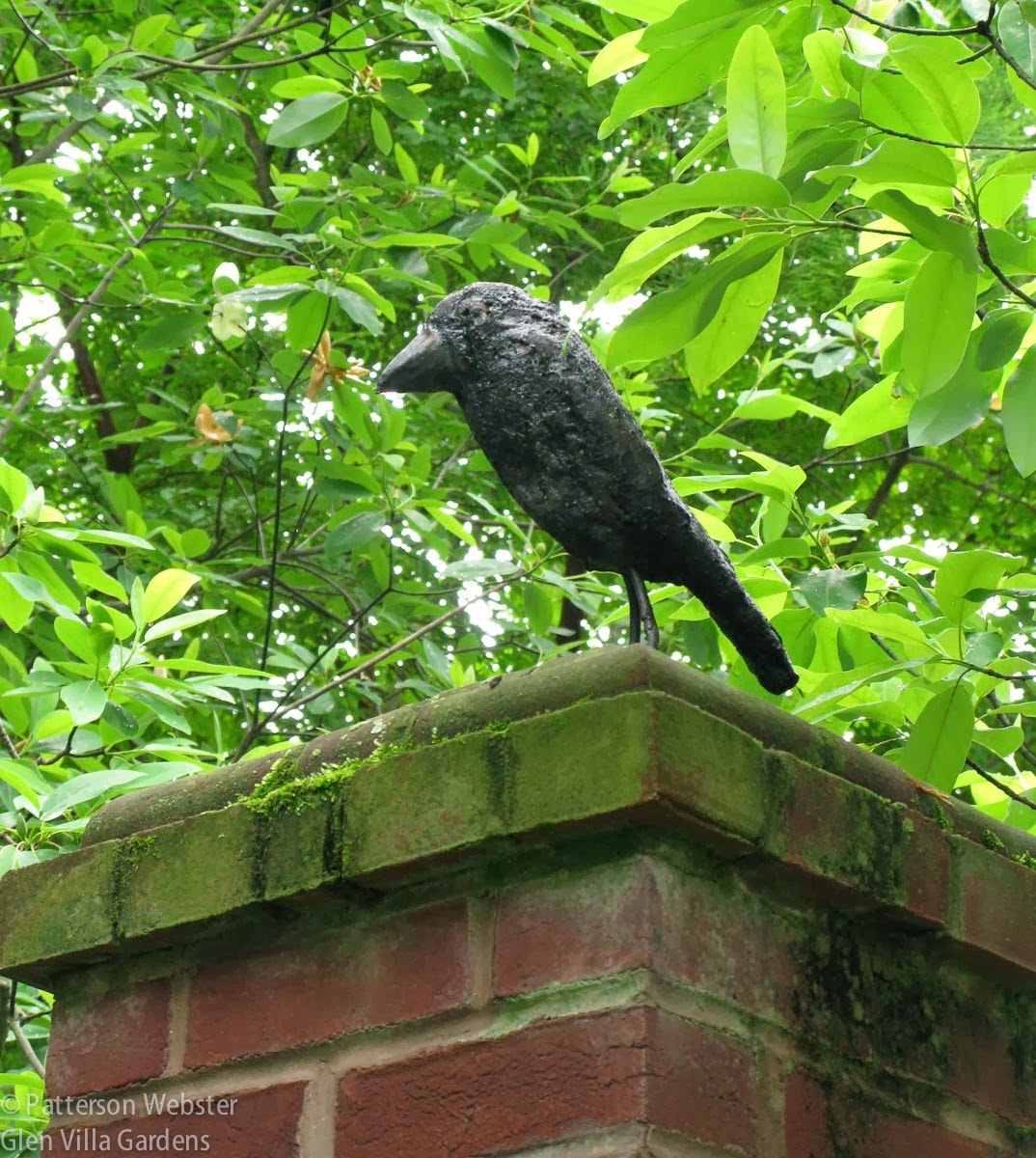 |
| A crow perches atop a brick pillar that marks the entry to this Maryland garden. |
Ideally, sculpture or any other type of garden art helps us to appreciate the garden and everything that is in it. This little cupid sits among vinca and hostas in a garden designed to suit a Quebec farmhouse built in the 1840s. The house and the art relate well, one to the other. Tucked into a shady corner, the cupid enhances its surroundings. Its pale colour brightens the shade, sending out a spot of light that draws our attention. We stop — or at least slow down. And when we do, we notice details: how the shape of the shield relates to the shape of the hosta leaves and how the cupid’s tight little curls mirror the small leaves of the vinca.
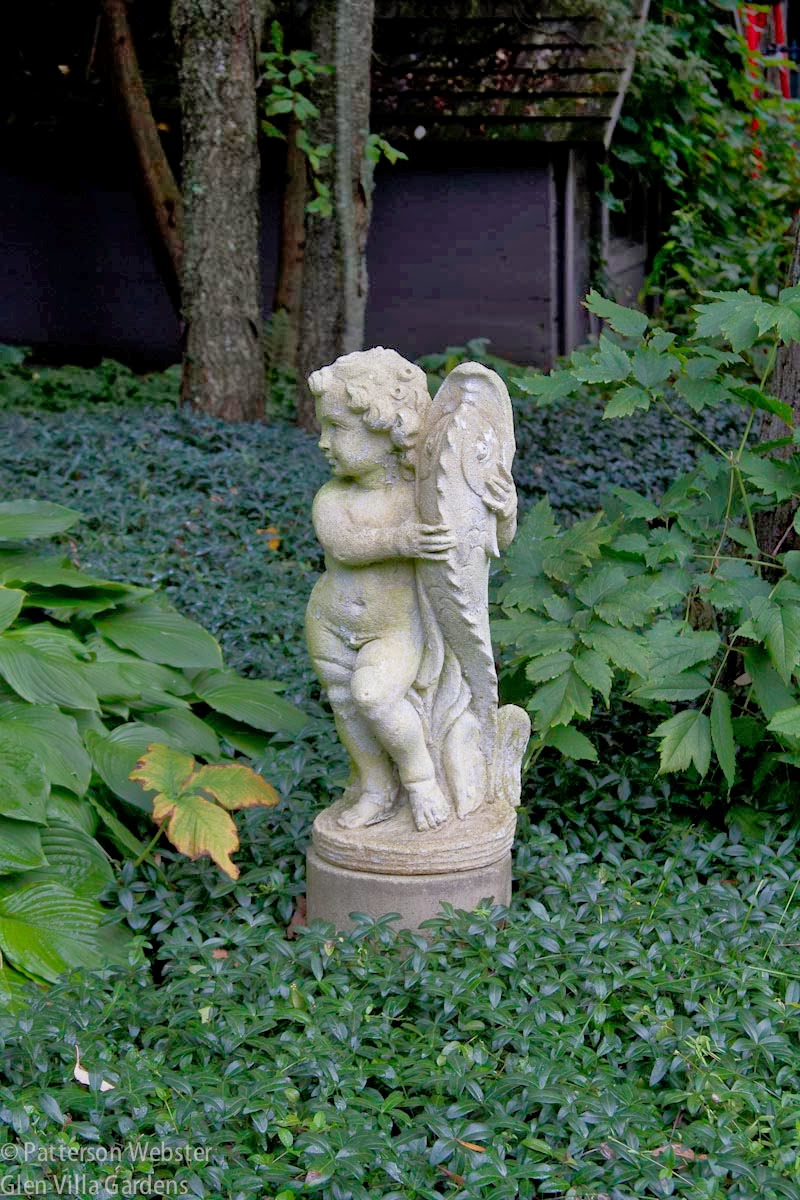 |
| I’m not a big fan of cupids but I do like this one, particularly the rolls of fat on his legs. |
The statues of Hercules, the cupid, the bird, the contemporary ceramic column seen from different angles in different seasons: all are permanently installed in their garden settings. All are made of permanent materials, marble, bronze, clay. For me, some of them enhance the garden where they are placed, others don’t.
Is it only a matter of personal opinion or can we generalize? If so, based on what? Does the message influence our responses? What about sculpture or other types of art that are made of ephemeral materials? Does that choice make a difference?
More on this subject next week.







I wonder if this comment will take, I just wrote nice things about those in your garden…I don’t go for Farnese monster but maybe the grounds are monstrous?
Oh I had to add re Hercules – it looks very inadvisable to sit (or stand) below him…goodness knows what might flow all over you!
The comments took, Liz. The grounds of Vaux-le-Vicomte are as enormous as the Hercules. And definitely not sure would flow if he decided to let loose!
I would think a little art in the garden is perfectly acceptable; but then what do you call art. Those little garden gnomes that abandoned Snow White, rocks, fountains, benches, religious pieces or perhaps a little something from Edward Scissor Hands, Cadillac was popular in the South?
Keep tuned, Robert.,. definitions (mine, at least) will follow.
The three pictures of the same sculpture from different angles and in different seasons was a very interesting exercise. I found I liked it in the first photo and not the other two. And I can’t say I particularly cared for the sculpture itself, but it did look like it belonged in the first picture.
I’m glad that the three photos evoked different response. Does this say more about photography than the sculpture itself? I agree that in the first photo the sculpture is integrated into the garden more than in the others… the plants are bigger so less of the sculpture is visible.
As you know, I like this topic, mainly because it is a difficult topic to form a definitive opinion. The question could be phrased differently to ask “is it successfull art in the garden” rather than “should there be art in the garden”. Properly placed and scaled art can enhance a garden, while poorly sited and out of scale art can detract.
It’s been a number of years since I was last at Kykuit (I used to live up the road, so to speak) but I don’t remember the Hercules being a distraction, but rather a visual rallying point. But then again, as with all art, it is in the eye of the beholder.
Amy, I agree that the placement and scale of art in a garden is crucial. It’s one of the important points I cover in a talk I give, on this topic exactly. (Art in the Garden: What, Where and Why). As always, the phrasing of a question will elicit different answers. Easiest to write a blog post when the question is blunt.
Just the piece I was hoping for for thinkingardens! (and didn’t yet get..) – a piece actually looking at garden sculpture and why it might work or not work. As challenging aspect of garden criticism as you’ll meet..
There is a difficulty in trying to assess the pieces, as you suggest, in photographs. Photographs of gardens have their own challenges and can’t substitute for actually being in a garden to experience the effects.
Having said that they do illustrate your points and support us doing some thinking about how and when and what we might add to our gardens…
Anne, I’d be delighted if you wanted to use it on thinkingardens. I do plan to write the garden reviews, eventually — but probably not until May.
I wonder if you would ever like to come and speak at the McCord Museum for the Women’s Art Society of Montreal on this subject. Our events take place on Tuesdays from 1.30 to 2.30 September to May. http://www.womensartsociety.com
Let me know.